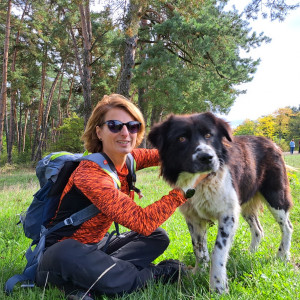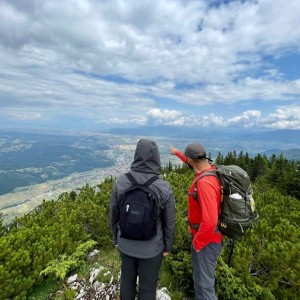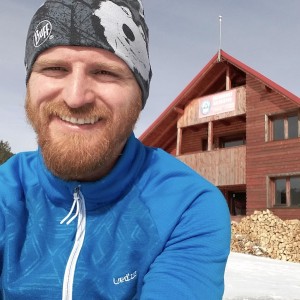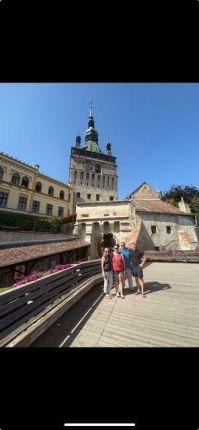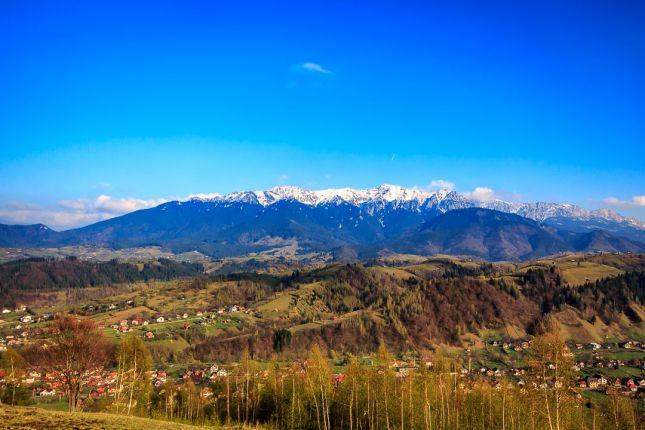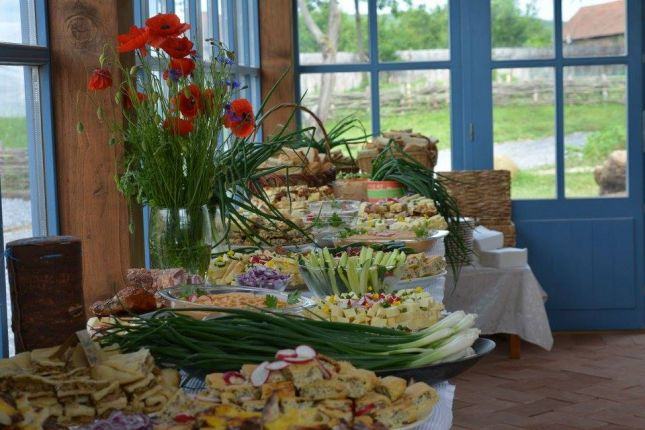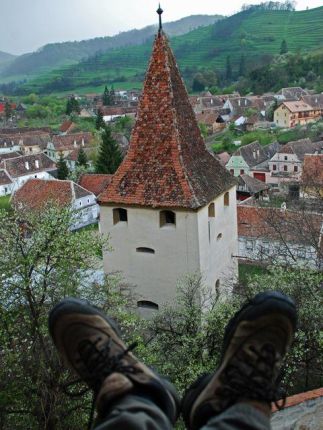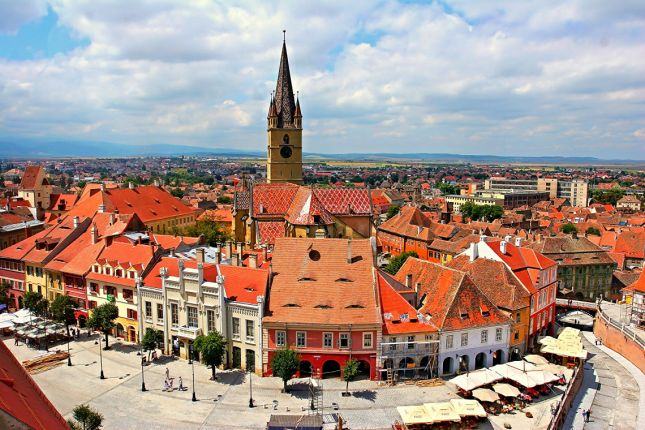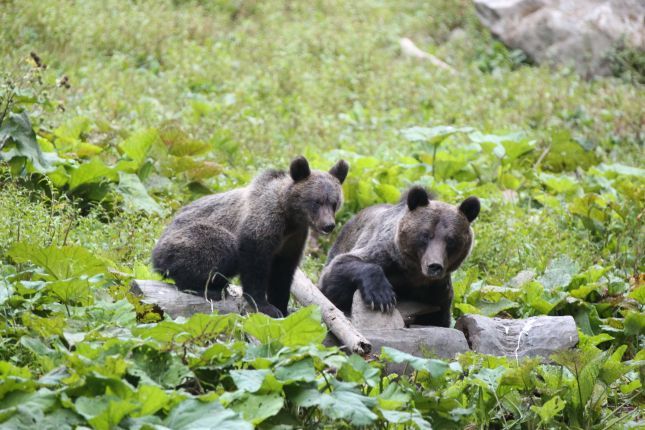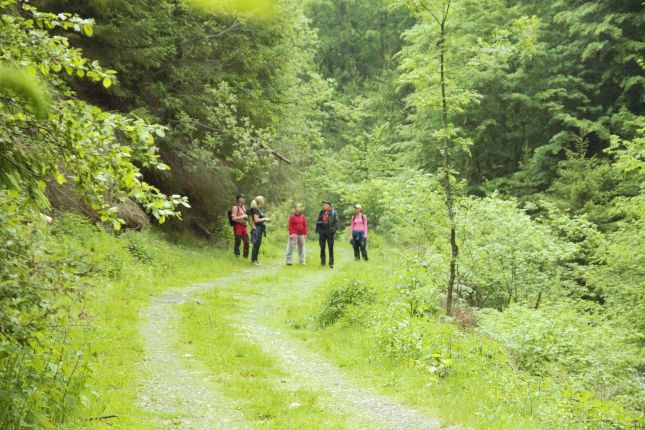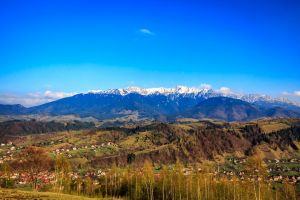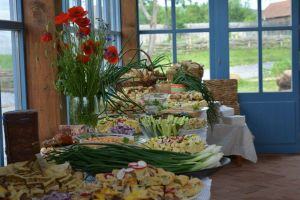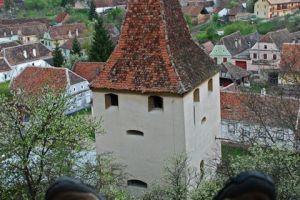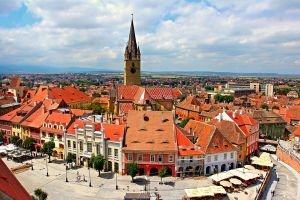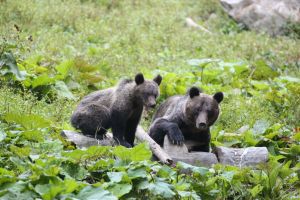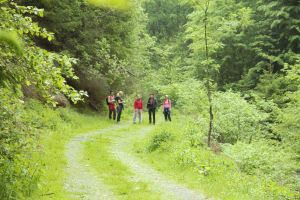
Transylvania Tours and Trips
A holiday in Transylvania is undoubtedly on every traveler's mind when visiting Romania. With a rich culture and fascinating history, beautiful natural wonders and many of Romania's popular tourist spots, going on guided tours in Transylvania is a must if you're planning to visit our country and want to discover the beauty of this region which is very local! Check our blog on the best tourist attractions in Transylvania to get more inspiration for your trip!
When planning your visit, consider setting up base in Brasov, Sibiu and Cluj-Napoca and doing guided day trips to explore Transylvania's famous tourist sights. Or if you're starting from Bucharest and going on a fully-guided private tour, make sure to spend enough time in the region. Our best tip? Explore the countryside of Transylvania: go into villages, meet locals, eat local food, slow down and experience local life. That's how you'll see - and feel - for yourself why Transylvania is so popular!
Here's our selection of guided tours and day trips in Transylvania that will make your holiday easier to plan:
Tour type:
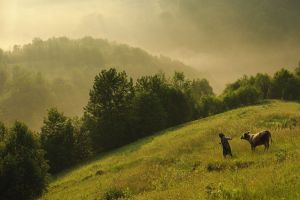
Photography Tour of Romania: Traditional Villages & Local Life
Start from: Brasov
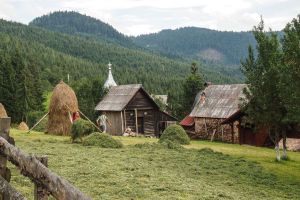
2 Day Hiking in Apuseni Natural Park: Culture & Local Life
Start from: Cluj-Napoca or Sibiu
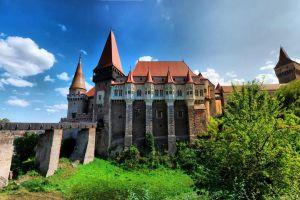
Sibiu Day Trip to Corvin (Hunyadi) Castle & Alba Iulia Citadel
Start from: Sibiu
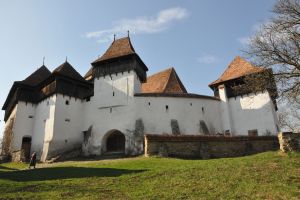
Transylvania Culture & History Day Trip: Viscri, Sighisoara & Rupea
Start from: Brasov
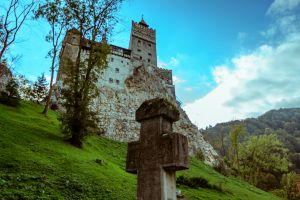
Brasov Day Trip to Bran Castle and Peles Castle
Start from: Brasov
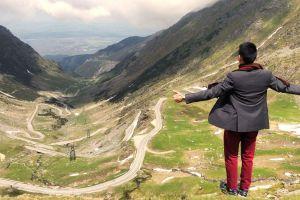
Transfagarasan Highway Tour: The Best Road in the World!
Start from: Sibiu
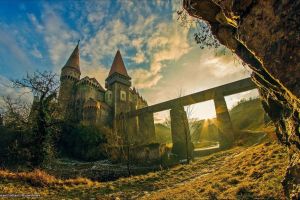
History Day Trip: Corvin Castle & Alba Iulia Citadel
Start from: Cluj-Napoca
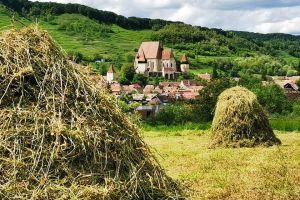
[1 or 2 Days] Life in Transylvania: Sighisoara Citadel & Saxon Villages
Start from: Sibiu
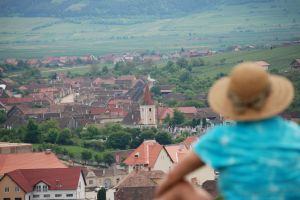
Day Trip: Village Life in Sibiu Countryside
Start from: Sibiu

{{ activity.title }}
Start from: {{ activity.starting_point }}
Reviews about Transylvania Tours and Trips

We had an unforgettable day on this tour near Cluj-Napoca! Florin, our guide, was incredible—his passion for history made every stop come alive. Walking and talking with him felt like spending the day in a living classroom. Alba Iulia Citadel was the highlight for us. The mix of ancient Roman ruins, royal and religious history, and the lively presence of a modern university made it surprisingly delightful. Each corner told a story, and we felt completely immersed. The tour’s pace was perfect. We had time to explore what interested us, and moving between stops was smooth. As a group, we opted to enjoy a meal at the Citadel, which was delicious with exceptional service. Everything felt organized, relaxed, and thoroughly enjoyable. We’d highly recommend this tour to anyone looking to experience the history, culture, and charm of the Cluj-Napoca area.

Our guide was amazing! We really enjoyed the day.

This was an amazing experience with a very knowledgeable and generous guide - wasn’t worried about how long we took - didn’t feel rushed and very accommodating : very very highly recommended!! September 2025

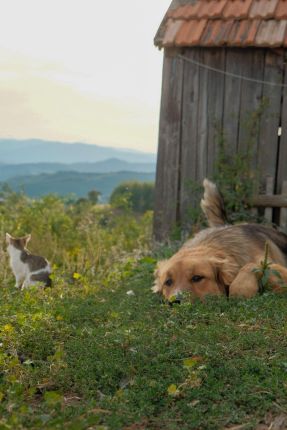
Vlad delivered an intimate and genuinely authentic experience exploring a remote hamlet where we were drawn into the rhythm of daily village life. Through his trusted relationships with locals, we heard people's stories of joy and pride in farming the land—some in homes still without electricity, others just getting connected. The experience felt naturally unfolding: encountering farmers at their homesteads, shepherds with their flocks, even watching a villager on a mission to find their wandering horse and guide it back to the sheep. We were welcomed to capture these unguarded moments naturally. This is one we won't soon forget.

Things to do in Transylvania & planning your trip
Contrary to popular belief, Transylvania is not just the home of Count Dracula. It is, in fact, a very important and culturally diverse region located in the heart of Romania.
Transylvania is truly unique. First-time visitors often become regulars, drawn by its beauty and endless activities. Even Prince Charles fell for its charm, restoring three village homes where he now spends his summers!
The name Transylvania means land beyond the forest, a fitting title for this vast region of woodlands, rolling hills, and picturesque villages nestled in the Carpathian Arc. Life here feels refreshingly different from the fast-paced modern world.
A trip to Transylvania is one that requires a bit of forethought and planning. To fully appreciate the region it is important to have an understanding of the history and culture of Romania.
On arrival, the best thing you can do is to take it slow, meet the locals and eat their incredible food. There are plenty of guided Transylvania tours run by locals in the area who are thrilled to introduce visitors to their beloved region.
Top Things to do in Transylvania
It's hard to grasp Transylvania's true charm from just an article, but in the next few paragraphs, I'll highlight top experiences and Transylvania sightseeing tours to help you discover its full potential.
1. Visit Medieval Castles in Transylvania
Transylvania boasts many castles, but none are more famous than Bran Castle. Its legend is so strong that there is even a Bran Castle Halloween Party,, also known as Dracula's Castle Halloween Party. However, you don’t need a party like this to feel its medieval charm. And fun fact: the real history of Bran Castle has little to do with Bram Stoker’s Dracula!
But if you want the true Dracula story, just let us know, we have guides who know Romanian history inside out and who will share everything you need to know, including the dark legends surrounding Dracula.
Corvin (or Hunyadi) Castle is a stunning Gothic masterpiece, resembling something out of a fairytale. With its majestic drawbridge, over 40 rooms, and towering red walls, it’s a must-see on Transylvania day trips. A guided tour is essential to fully experience its rich history, including the eerie legend of Turkish prisoners digging a 25-meter well, never freed despite promises.
Both castles offer fascinating stories, and while Corvin Castle is less famous than Bran, it’s a must-visit on your Transylvania tours.
These castles aren’t the only ones worth visiting in Transylvania. So, while choosing your Transylvania tours, be sure to include Rasnov Fortress, Fagaras Fortress, the royal Peles Castle, and Poenari Citadel, the real home of Vlad the Impaler, aka Dracula.
2. Biking and cycling tours
One of the best ways to explore Transylvania is on a guided bike tour, an active, scenic, and immersive experience. Cycle through stunning landscapes, visit charming villages and enjoy local hospitality.
For a shorter adventure, try a bike tour in the mountains around Brașov. If you’re in Cluj-Napoca, cycle to Turda Salt Mine, one of Transylvania’s top attractions. From Sibiu, ride the legendary Transfăgărășan Road, a winding mountain route offering unforgettable views.
Prefer four legs over two wheels? Horseback riding tours in Piatra Craiului let you explore the mountains just as locals once did. Some farms even offer archery, so you can channel your inner Robin Hood on your Transylvania holiday.
3. Discover the fortified villages
When visiting Transylvania, take the time to explore its charming villages with fortified churches. We are talking about seven villages that are part of the UNESCO World Heritage Site listing: Biertan, Prejmer-Tartlau, Viscri, Dârjiu, Saschiz-Keisd, Câlnic, and Valea Viilor. But Viscri is most definitely the most famous.
In many of these villages, the village hall functioned as a cultural hub, alongside the fortified churches, playing a key role in preserving local customs and traditions. Some even boast nearby castles.
Once numbering 300, these fortified churches served both religious and military purposes for over five centuries, forming one of Europe's best-preserved and most concentrated medieval fortification systems.
A day trip from Brașov takes you through the picturesque Saxon villages of Saschiz, and Viscri (famous for its connection to Prince Charles.) Along the way, visit Saschiz’s 14th-century Fortified Church, enjoy traditional meals, meet local craftsmen, discover impressive attractions related to history and traditions, and stay in beautifully restored guesthouses. Photography lovers will capture authentic village life and breathtaking countryside views, with local guides ensuring you get the best shots.
4. Go on hiking and trekking trips in Transylvania
When it comes to Transylvania, many expect the dark, eerie landscapes from Stoker-inspired films, imagining only Halloween tours and perhaps stumbling upon those who sell Transylvania holidays and organize vampire tours, though there’s nothing real about them. Instead, they discover a fairy tale of enchanting forests, scenic trails, and welcoming locals proud to share Romania’s natural beauty.
So forget about tours that revolve around the Transylvanian vampire castle, and opt for a guided hiking tour in Transylvania for a truly unforgettable experience.
The Carpathians hold endless adventures, with top trails in the Făgăraș, Apuseni, Trascău, Călimani, and Rodnei Mountains.
These mountains require a licensed mountain guide for safety, especially if it’s your first time in the Romanian mountains. Weather can shift fast, and occasional bear encounters make expert guidance invaluable on your Transylvania hiking tour.
5. Wildlife watching and tracking trips
Transylvania is home to Europe's largest brown bear population. These bears are protected by law, and the best way to see them is on a guided bear-watching tour in Brașov. While spotting them on your own can be challenging, a guide ensures a safe and rewarding experience.
Near Brașov, the Libearty Bear Sanctuary cares for around 100 rescued bears, offering a safe space to watch these animals in a natural setting.
But in Romania's forests, you can also spot other wildlife, including wolves, lynxes, foxes, wild boars, deer, and more.
6. Ski and winter sports tours
Transylvania is also a fantastic winter destination, perfect for enjoying winter sports.
Poiana Brașov, just 12 kilometers from Brașov, is Romania's most popular ski resort, and for good reason. It offers the longest slopes in the country, making it ideal for a day trip or a short getaway.
While Poiana Brașov is also the priciest skiing option in Romania, you'll find luxurious 4-5* hotels and fine dining restaurants to match the experience.
Main tourist cities in Transylvania
Brasov, a perfect mix of urban and rural, is one of Romania’s most popular destinations and medieval towns. It’s the ideal base for guided Transylvania tours, with trendy boutiques, restaurants, cafes, cultural sites, and fresh mountain air. Brasov offers a variety of accommodations, from city-centre hotels to neighborhood lodgings, giving visitors a true Romanian experience.
From Brasov, day trips to attractions like Bran Castle, Peles Castle, and the medieval Saxon citadel of Sighisoara, which is also the birthplace of the ruthless Count Dracula, are easily accessible.
Sighisoara is one of Europe's best-preserved medieval fortresses and a UNESCO heritage site. There are about 164 houses in the citadel, all functional, inhabited or turned into boutique hotels and restaurants, where you can enjoy a traditional Transylvanian dinner, or museums, surrounded by 9 towers and 2 bastions, impressive defensive walls and up to 9 churches where people have been going to mass for hundreds of years.
A trip to Dracula's birthplace offers several UNESCO heritage sites along the way, including the Biertan Fortified Church with its unique Divorce Room, where couples were isolated before being granted separation.
Our guide will take you to the best gastro-stops, and locals are eager to share their stories of village life.
Pretty close to Sighisoara, and nestled in the heart of Transylvania, Sibiu is another idyllic European gem with a rich multicultural history and a bohemian vibe, and a great base for amazing tours. Known for its festivals like the International Theater Festival, Jazz Festival, and Sibiu International Film Festival, it offers a vibrant cultural scene. The city's cobbled streets, eclectic architecture, and delicious food make it perfect for a guided tour.
For a taste of rural life without leaving the city, visit the Astra Ethnographic Museum, an outdoor replica of traditional Transylvanian villages, complete with local architecture and communal dining. Explore legends, stunning views, and local cuisine all in one place.
Cluj-Napoca, Romania’s tech and youth hub, is another great base for exploring Transylvania. With the country’s second-largest airport, a range of accommodations, and friendly locals, it’s ideal for both relaxation and adventure. Known as the biggest festival in Europe, UNTOLD, Cluj is a UNESCO City of Film and home to the renowned Transylvania Film Festival. Discover the city’s rich history through its 12 stunning 18th and 19th-century palaces, once homes to noble Szekely and Hungarian families. A guided tour is the best way to explore Cluj's unique culture.
Cluj’s museums offer a wide range of interests, from history and ethnography to nature. Visit the History Museum, Transylvania Ethnographic Museum, and the Museum of Jewish History, or explore the Botanical Garden, Vivarium, and Water Museum. Also, the Art Museum and galleries host vibrant events year-round.
Day trips from Cluj often include the Turda Salt Mine, a unique underground amusement park with a giant wheel and saltwater lake for boat rides, an experience full of light, fun, and wellness.
And for an amazing Halloween, skip the typical vampire hunting show and costume contest in a Dracula-themed saloon decorated with vampire-related items, and instead experience the eerie Hoia Baciu haunted forest on small group tours or even on a private tour. Discover all the dark legends as our guides take you through this mysterious place, known for its inexplicable phenomena, like the perfectly round glade where grass doesn’t grow. If you’re looking to spend Halloween in a truly spooky setting, this is the perfect adventure for you.
Another city you should keep in mind while visiting Transylvania is Timisoara, the third-largest city in Romania and the European Capital of Culture for 2023. Well-connected by its airport and nearby to other cities, it’s perfect for day trips and tours in Transylvania, hiking in the Carpathians, or visiting the Danube Cauldrons.
The city's architecture blends Art Nouveau, Baroque, and Neoclassical styles, with three main squares brimming with restaurants and cafes. Timisoara’s rebellious history, marked by the 1989 revolution, is evident throughout the city, especially at the Revolution Museum and Museum of the Communist Consumer. Don’t miss Roses Park, the Art Museum, and the nearby Banat Museum.
- If you’d like to spend most of your time in Romania’s capital, you can still experience the magic of Transylvania with a Bucharest Transylvania tour. Contact us, and we’ll design a customized tour just for you. Keep in mind that this type of tour typically includes must-see destinations like Bran Castle, Peleș Castle, and Brașov. However, to truly immerse yourself in Transylvania’s rich history and culture, we recommend dedicating a few days to exploring the region.
A small history lesson about Transylvania
Over 2000 years ago, Romania's Dacian ancestors arrived in the southwest of Transylvania and several settlements began. Their capital city was called Sarmisegetusza Dacia. In the year 105, the Dacians were conquered by the Romans (after many long battles); the long process that gave birth to Romania in the Middle Ages had started.
Since the Roman settlement, Transylvania has welcomed people from a wide variety of cultures. Which in turn influenced all aspects of life there, from the architecture and the cuisine to the language spoken. The region of Transylvania as we know it today was founded by a mix of Vlachs (Romanians), Hungarian Székelys and German Saxons.
Thanks to the unique blend of cultural influences in Transylvania, the cuisine you will find there is also very special.
Transylvanian cuisine is slightly different from traditional Romanian food - heavy on fat and largely focused on pork, vegetable stews and sour soups (ciorba). The best way to discover Transylvanian cuisine is through a local food tour, especially in the region around Sibiu which is known for its culinary diversity.
Since Romanian cuisine is unknown to most tourists a guided tour can be very helpful for making the most of your trip to Romania.
Quick facts about Transylvania
The region is 1/3 of Romania's total surface with an area of approx. 100 square kilometers; it is actually bigger than the whole country of Austria!
The population of the region is around 7 million and there are a number of important cities to consider for your trip. If you are flying straight into Transylvania your best bet is to go to Cluj-Napoca as the city is very well connected to all the important sites. Other cities with well-served international airports are Sibiu and Timisoara. You could also fly into Romania's capital, Bucharest, and drive 3 hours to Brasov or 5 hours to Sibiu via car or train.
The main language spoken in Romania is, of course, Romanian. In the Eastern part of Transylvania, in the counties of Covasna, Harghita and Miercurea Ciuc, Hungarian is predominant as an ethnic Hungarian minority lives there. You will also hear English spoken in the larger cities and around main tourist sites.
Exploring the origins behind the Dracula myth
It's impossible to discuss Transylvania without mentioning the marketing phenomenon surrounding Dracula. Many people immediately associate the region with Bram Stoker's famous vampire, but as you've seen, Transylvania has so much more to offer.
That said, if you're looking for an immersive Dracula-themed experience, you’ll find plenty of tours and guides ready to tell you exactly what you want to hear, and even dedicated events, like Dracula's Castle Halloween Party, the biggest Romanian Halloween party, or Sighisoara Halloween Party. While Dracula is purely fictional, his inspiration comes from a real historical figure, Vlad the Impaler.
But what made this historical figure the inspiration for Dracula?
Vlad the Impaler, a 15th-century ruler of Wallachia (Țara Românească), became infamous for his ruthless tactics against Ottoman invaders. His legacy of cruelty, particularly his preferred method of execution, impalement, helped shape the myth of Dracula.
The myth of Dracula has greatly boosted Transylvania’s popularity, which is, mainly, a positive thing. There are plenty of Dracula-related experiences to enjoy. You can stay at the Dracula Castle Hotel or take part in various themed tours that bring the legend to life. In fact, previous Dracula tour-goers have shared their excitement about the themed parties, which is why they return year after year, especially for the Halloween vacations.
However, it’s important to remember that this legendary figure is just one part of Transylvania’s rich history. While the endless list of Dracula tours Transylvania may seem like an exciting experience, don’t focus solely on a Romania Dracula tour. This region has so much more to offer beyond the legend for the best Transylvania holidays.

 24 REVIEWS
24 REVIEWS
